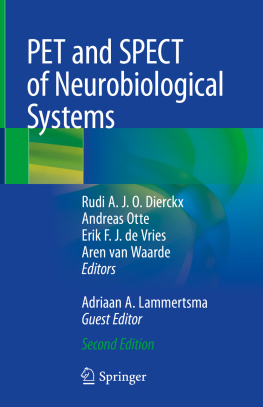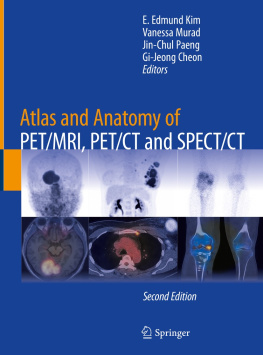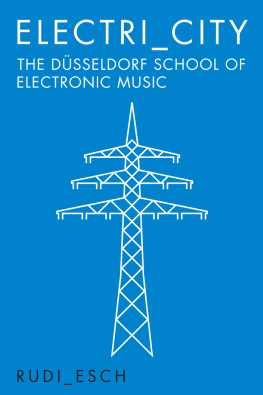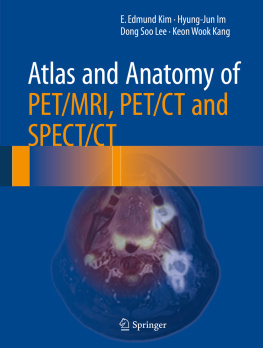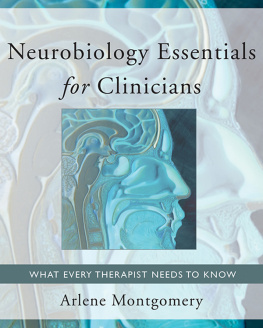Rudi A. J. O. Dierckx - PET and SPECT of Neurobiological Systems
Here you can read online Rudi A. J. O. Dierckx - PET and SPECT of Neurobiological Systems full text of the book (entire story) in english for free. Download pdf and epub, get meaning, cover and reviews about this ebook. publisher: Springer International Publishing, genre: Romance novel. Description of the work, (preface) as well as reviews are available. Best literature library LitArk.com created for fans of good reading and offers a wide selection of genres:
Romance novel
Science fiction
Adventure
Detective
Science
History
Home and family
Prose
Art
Politics
Computer
Non-fiction
Religion
Business
Children
Humor
Choose a favorite category and find really read worthwhile books. Enjoy immersion in the world of imagination, feel the emotions of the characters or learn something new for yourself, make an fascinating discovery.
- Book:PET and SPECT of Neurobiological Systems
- Author:
- Publisher:Springer International Publishing
- Genre:
- Rating:3 / 5
- Favourites:Add to favourites
- Your mark:
- 60
- 1
- 2
- 3
- 4
- 5
PET and SPECT of Neurobiological Systems: summary, description and annotation
We offer to read an annotation, description, summary or preface (depends on what the author of the book "PET and SPECT of Neurobiological Systems" wrote himself). If you haven't found the necessary information about the book — write in the comments, we will try to find it.
PET and SPECT of Neurobiological Systems — read online for free the complete book (whole text) full work
Below is the text of the book, divided by pages. System saving the place of the last page read, allows you to conveniently read the book "PET and SPECT of Neurobiological Systems" online for free, without having to search again every time where you left off. Put a bookmark, and you can go to the page where you finished reading at any time.
Font size:
Interval:
Bookmark:
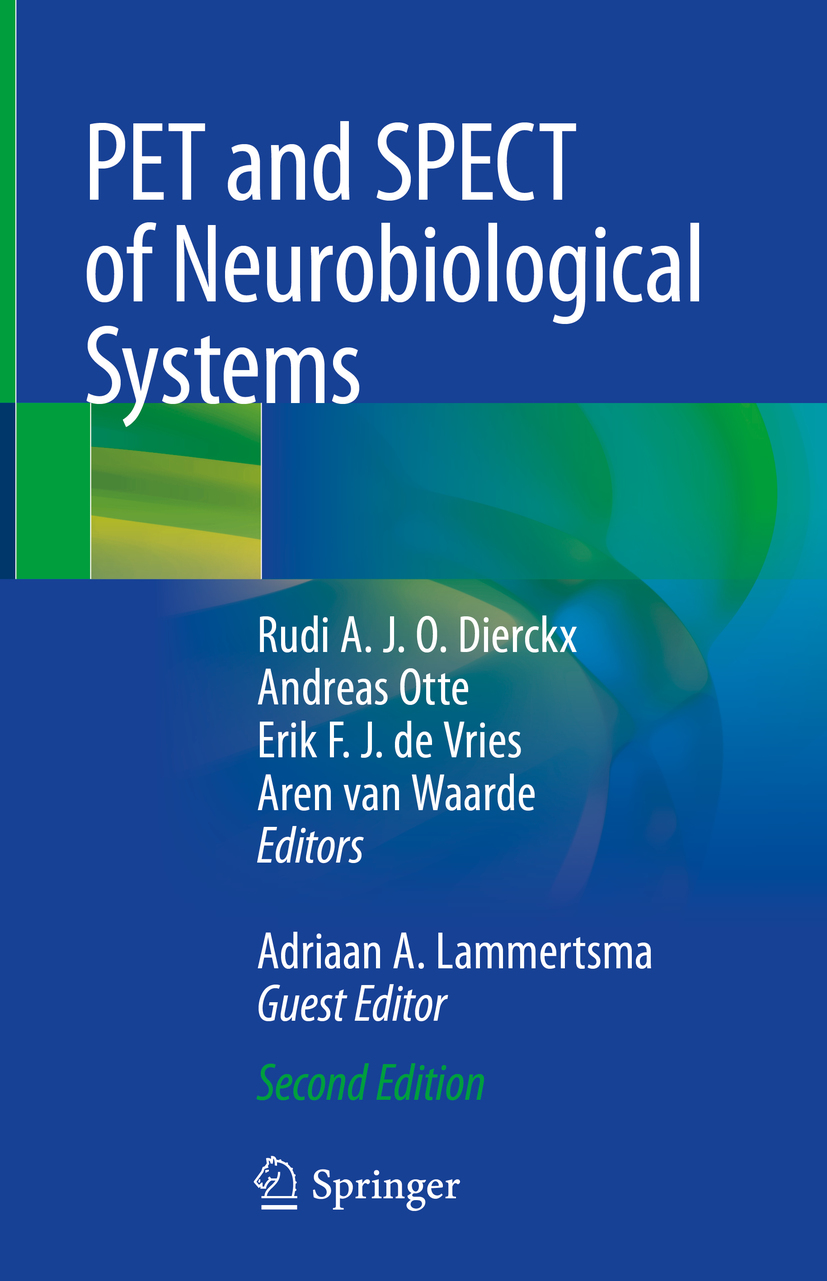

This Springer imprint is published by the registered company Springer Nature Switzerland AG
The registered company address is: Gewerbestrasse 11, 6330 Cham, Switzerland
When in 2014 the editors published the first edition of this three-volume series, dedicated to the use of PET and SPECT in the CNS, a major undertaking saw the light in print. These were significant multi-authored books, providing the most comprehensive review of this challenging field at the time.
Now in 2020, a second edition is launched, demonstrating the success of this initial endeavor. With a further major effort, over 50 % of the numerous chapters are either entirely novel or rewritten anew, by an impressive list of international contributors. The team from Groningen deserve warm congratulations for this achievement.
In 2004, PETMR had just emerged as a novel imaging modality, and the medical applications of machine learning, or artificial intelligence, had hardly surfaced. PET imaging of Tau had just made it.
Now in 2020, amazing progress in the understanding of the brain is being made, and even dedicated brain PET and PETMR imaging instruments are in development (Catana 2019). Yet, with its hundred billion neurons, the brain keeps its mystery and continues to engage and stimulate our enquiry.
Little by little progress is being made, from decoding consciousness (Sohn 2019) to growing neurons from reprogrammed skin fibroblasts (Kofler 2019). We now understand that protein deposits in the brain may precede clinical manifestations by years, great advances have been made in extracting quantitative data from such studies (as shown with PETCT and amyloid and tau numerical data) and that we can intervene effectively, inter alia, in receptor deficiencies and in deep brain stimulation. The brain connectome is unravelling, with it, greater understanding of, among others, pain and drug-induced addictions, the dementias, and the movement disorders. All of this and much more is being critically reviewed by 119 chapters spread into these three major volumes.
It is hence perfect timing that the second edition shines a new light at the significant progress made in PET and SPECT, describing and analyzing latest information from novel biological radionuclide probes, neuroreceptors, and the clinical progress achieved.
Catana C (2019) Development of Dedicated Brain PET Imaging Devices: Recent Advances and Future Perspectives. J Nucl Med 60:104452
Kofler N (2019) Brain in a Dish, Babies by Design: What It Means to Be Human. Nature 569:33334
Sohn E (2019) Decoding the Neuroscience of Consciousness. Nature 571:S2S5
Neuroscientists of today dispose of a powerful armament for functional, physiological, and molecular imaging that has never made more impressive advances than before, helping to better understand the mechanisms of diseases and to develop and design drug treatment options with a superior efficacy and safety profile. Among these instruments, positron emission tomography (PET) and single-photon emission computed tomography (SPECT) have become forerunners in the in vivo imaging arena, and for this reason, the present trilogy, now in its second, completely revised and supplemented edition, is dedicated to PET and SPECT. The volumes of this trilogy are PET and SPECT in Psychiatry, PET and SPECT in Neurology, and PET and SPECT in Neurobiological Systems. In all volumes, we have again assembled the combined expertise of the renowned authors of the first edition and expanded this by some new authors for the second edition, whose dedication to the investigation of psychiatric and neurological disorders or of neurobiological systems through nuclear medicine technology has achieved international recognition.
The editors, who are nuclear medicine specialists, radiochemists, and biologists with a strong exposure to neurosciences, have again invited experts from the psychiatry, neurology, and medical physics fields to enhance the editorial board as guest editors for each volume of the trilogy. For PET and SPECT in Psychiatry, this was Iris Sommer, professor of cognitive aspects of neurological and psychiatric disorders; for PET and SPECT in Neurology, it remained Klaus (Nico) L. Leenders, emeritus professor of neurology; and for SPECT in Neurobiological Systems, it was Adriaan A. Lammertsma, professor of medical physics and positron emission tomography.
We are very happy that our trilogy has become a state-of-the-art compendium with top downloads already for the first edition. This is certainly also due to the production and distribution by one of the premier publishers in the field, guaranteeing a high quality of reproduction and allowing for the inclusion of many color figures, which is essential in the field of neuroimaging. We are intrigued by the enthusiastic response from contributors from all over the world who made this endeavor successful and are confident that the second edition continues to live up to this onus. Finally, we would like to thank Mrs. Gesa Frese from
Font size:
Interval:
Bookmark:
Similar books «PET and SPECT of Neurobiological Systems»
Look at similar books to PET and SPECT of Neurobiological Systems. We have selected literature similar in name and meaning in the hope of providing readers with more options to find new, interesting, not yet read works.
Discussion, reviews of the book PET and SPECT of Neurobiological Systems and just readers' own opinions. Leave your comments, write what you think about the work, its meaning or the main characters. Specify what exactly you liked and what you didn't like, and why you think so.

